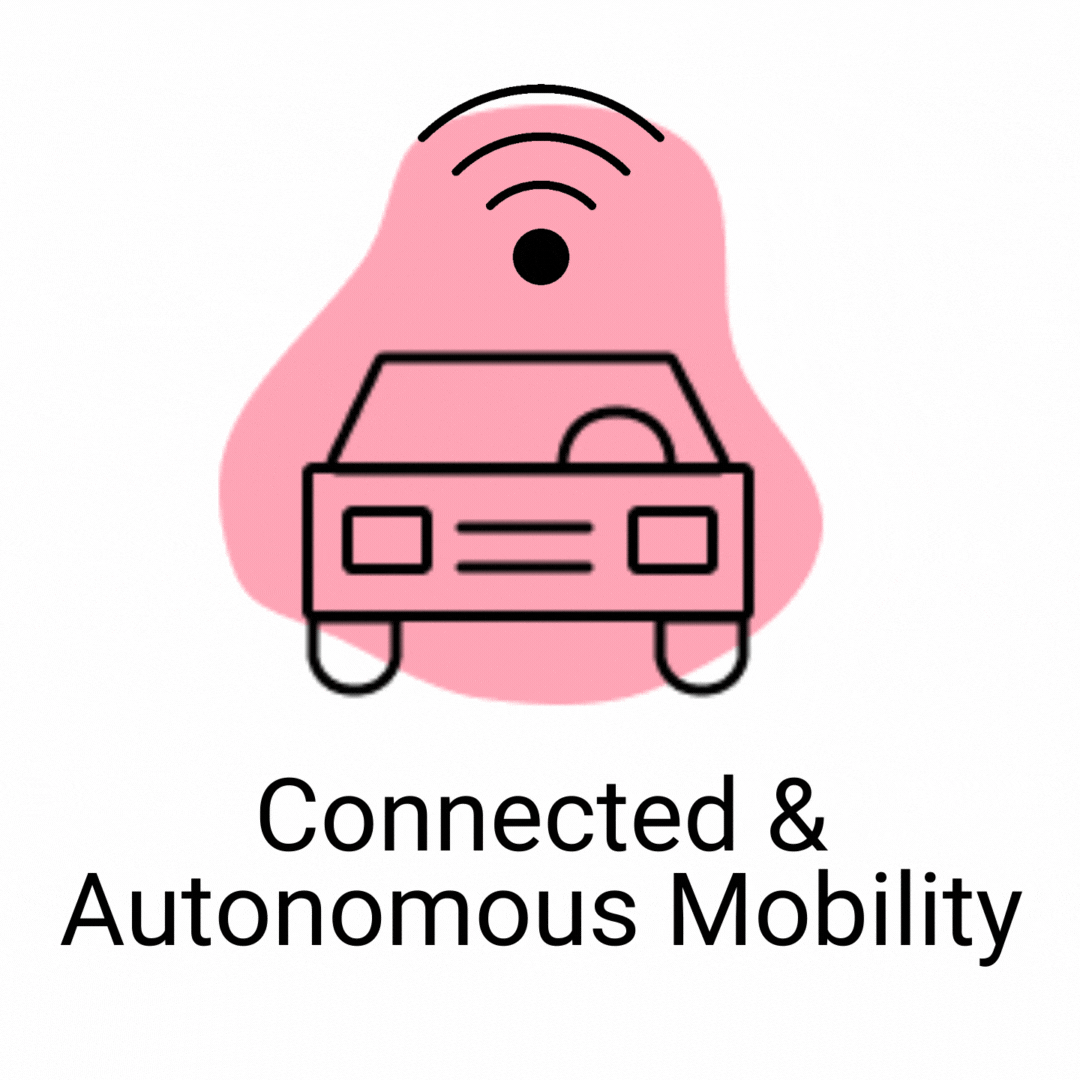Overview
Connected vehicles in smart cities, including vehicle to vehicle (V2V), vehicle to infrastructure (V2I), and vehicle to anything (V2X) communications, can provide more opportunities and impose more challenges for urban traffic signal control. This research aims to explore the basic research on developing signal control and coordination methods under the CV environment, develop a framework for urban traffic signal optimization with CVs, and test the developed methods both in traffic simulation and using real-world CV data.
Traffic Signal Control Changes
Previously, most traffic signal researchers used infrastructure sensors, such as loop detectors or video cameras, as their major source of information on traffic conditions. Traffic control systems mainly relied on manually collected traffic counts and data from these infrastructure sensors. Traffic signal plans were developed based on arrival vehicles adjusted by the time of day. However, point detectors and video detectors have many disadvantages. Point detectors only record the location of vehicles when they pass by. There is no trajectories information, such as speeds, positions, and accelerations of a vehicle. Detectors at stop bars have higher failure rates because of the rigorous vehicle braking and accelerating behaviors. In addition, maintenance of the detector is time-consuming and costly. The performance of video detectors can be negatively impacted by environmental conditions, such as lighting (the most cited condition causing video detector failure) and weather. These limitations can be overcome by turning to more advanced data sources.
Connected Vehicle and V2X Technologies
Instead of relying on infrastructure sensors such as loop detectors, urban traffic signal control can be transformed by Connected Vehicle (CV) technology. CV enables vehicle-to-everything (V2X) communications and leads to an intelligent transportation system where all vehicles, road users, and infrastructure systems can communicate with each other. Various communication technologies can be applied, such as cellular, Wi-Fi, satellite radio, or dedicated short-range communication (DSRC). CV/V2X will provide more information about traffic conditions, which in turn will help reduce congestion, reduce accident rates, maximize traffic flows and minimize emissions. With Vehicle-to-Vehicle (V2V) communications, vehicle position, speed, acceleration, etc., can be exchanged among nearby vehicles. With Vehicle-to-Infrastructure (V2I) communications, vehicles can communicate information such as vehicle trajectories, traffic conditions, and signal timing to traffic signals, work zones, tollbooths, and other types of infrastructure.
While not widely deployed yet, CV technologies are growing. The American Association of State Highway and Transportation Officials (AASHTO) predicts that 90% of light vehicles will be equipped with V2V technologies by 2040. AASHTO also estimates that by 2025, 20% of signalized intersections will be capable of V2I communication, and by 2040, 80% of signalized intersection will be V2I capable.
CV/V2X and Traffic Signal Control
V2V/V2I communications bring new paradigms compared to traditional traffic signal operations. Traffic controllers can collect real-time data from CVs (position, speed, fuel consumption parameters), then process the data to optimize signal-timing plans at an intersection, along a corridor, or for a region in order to minimize delay, number of stops, and environmental impacts.
Research Objectives
The goal of this project is to investigate traffic signal timing optimization techniques based on CV data, i.e., real-time information on vehicles’ locations and speeds, as well as communications to the signal control systems. Specifically, the research team will:
- Develop and evaluate signal timing optimization methods for isolated intersections under various penetration rates of CVs.
- Develop coordinated signal operation schemes along corridors or for a network to optimize the offsets of multiple intersections and evaluate how each signal change affects the signal timing of nearby intersections.
- Test and validate the models and algorithms developed in this project using traffic simulation tools.
This project will provide insight to practitioners about traffic signal control under the CV environment; train graduate students about signal control, CV, data, and signal optimization and control using CV data; integrate research findings into undergraduate and graduate courses in transportation for the training and education of next-generation transportation professionals.




